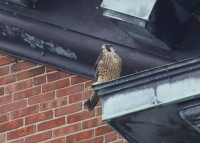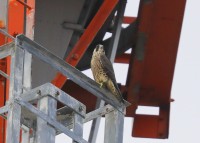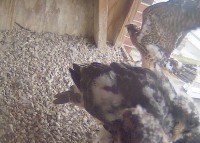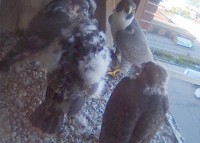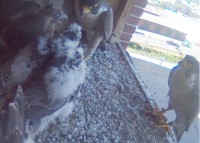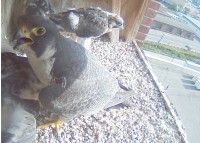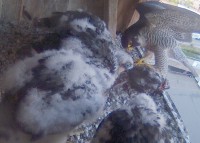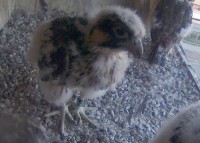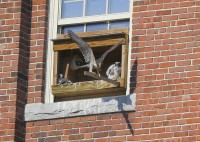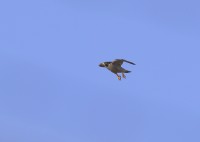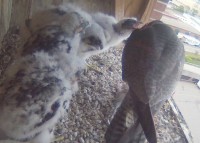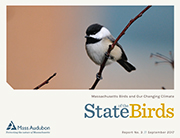Two Peregrine adults and one fledgling at Clock Tower
August 14, 2017 in On the Clock Tower
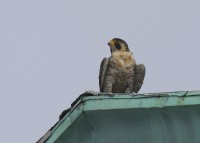 The 2017 hatch year fledglings made first flight almost 8 weeks ago. Three of the fledglings have been seen regularly around the Clock Tower. The first fledgling left and has not been seen since fledging. At this stage of growth, parents provide two important things to the young falcons: predator protection as well as food supply. Here, the adult female remains on guard for any predator threats.
The 2017 hatch year fledglings made first flight almost 8 weeks ago. Three of the fledglings have been seen regularly around the Clock Tower. The first fledgling left and has not been seen since fledging. At this stage of growth, parents provide two important things to the young falcons: predator protection as well as food supply. Here, the adult female remains on guard for any predator threats.
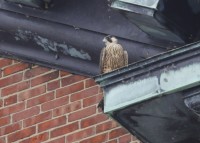 The protection continues, but the food supply, as provided by the parents, begins to dwindle as they improve their ability to chase and capture prey. The falcon experts suggest that most young peregrine falcons disperse on their own once they have become proficient at killing on their own. This young peregrine may be the only one left around the natal site!
The protection continues, but the food supply, as provided by the parents, begins to dwindle as they improve their ability to chase and capture prey. The falcon experts suggest that most young peregrine falcons disperse on their own once they have become proficient at killing on their own. This young peregrine may be the only one left around the natal site!
